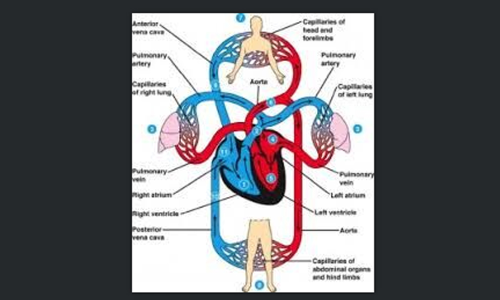Blood and the circulatory system

Did you know that blood contains more than just blood cells Our bloodstreams carry red blood cells, white blood cells, platelets, and plasma Red blood cells, or erythrocytes, carry oxygen through the body and make up a little over 44 of our blood content
Did you know that blood contains more than just blood cells? Our bloodstreams carry red blood cells, white blood cells, platelets, and plasma. Red blood cells, or erythrocytes, carry oxygen through the body and make up a little over 44% of our blood content.
White blood cells, which are part of the immune system, fight disease by attacking and devouring harmful cells. Platelets initiate blood clotting by pinching together damaged arteries. White blood cells and platelets together make up less than 1% of our blood. Liquid plasma, which makes up 55% of our blood, carries nutrients to the rest of the body.
Veins carry deoxygenated blood to the heart, and arteries carry blood out from the heart. Tiny capillaries connect veins and arteries to body tissues. Arteries have thick cell walls and are tough and elastic in construction, to deal with the pressure of the blood being pumped through them. Veins have thinner walls and are not as elastic.
Human hearts have four chambers. Deoxygenated blood—which needs a fresh supply of oxygen—is brought into the first chamber, the right atrium. The blood is pumped into the right ventricle, and from there it is pumped to the lungs. In the lungs, the blood receives oxygen. From the lungs, the oxygenated blood is brought back to the heart. The blood passes through the left atrium into the left ventricle, and from there it is pumped through the rest of the body.
To measure your pulse rate, place your second and third fingers over your wrist on the palm side, in the slight depression beneath your thumb. Gently move your fingers up and down until you find the pulse. You shouldn’t have to push down on your wrist. Count the number of beats that you feel in one minute’s time.
Measure the pulse rates of your children while they are resting. Then measure their pulse rates again after each has exercised for one minute and then ten minutes. Compare the results and explain that exercise increases the body’s demand for oxygen, which results in increased heart and pulse rates.




















